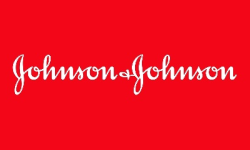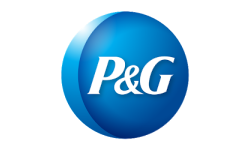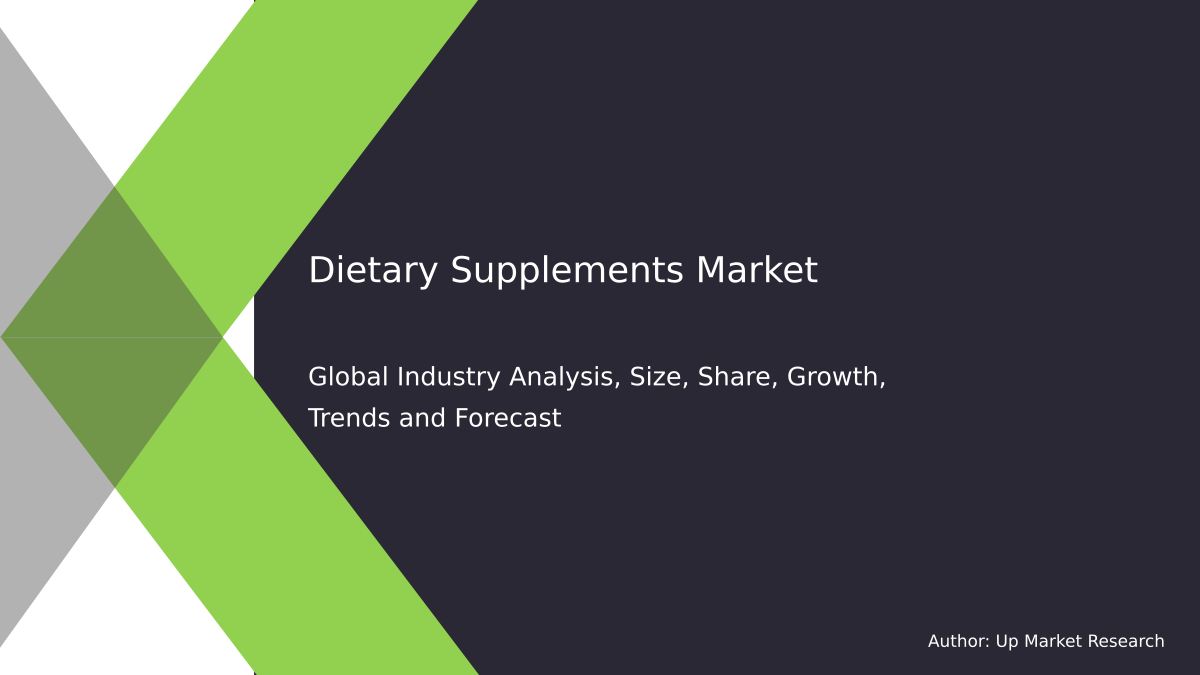
Global Omega 3 Market by Type (ALA, EPA, DHA), by Source (Plant Source, Marine Source) and Region (North America, Latin America, Europe, Asia Pacific and Middle East & Africa), Forecast To 2028
Summary of the Report
Global omega 3 market was worth USD 2.49 billion in 2019. It is forecast to grow at 7.7% CAGR over the forecast period. This industry is driven by increasing penetration of omega3 in the active pharmacy ingredient (API). The market is growing due to increasing awareness about chronic diseases, expanded application of omega 3 and regulations favoring the use of omega 3 in infant formulations. To maximize their market reach, companies that are key to the industry are actively involved in obtaining product certificates.
Market leaders are now focusing on expanding their product portfolio through a variety of strategies, including mergers and acquisitions. Aker BioMarine purchased Neptune Technologies & Bioressources Inc.’s krill oils inventory, and intellectual property in August 2017 for USD 34 millions. Aker BioMarine took this strategic move to increase its market share in the krill industry.
Functional foods and supplements emerged as North America's largest application sector in terms of demand. This is due to the fact that omega-3 is highly effective in treating a number of health conditions including depression, bone loss and mental health.
The most difficult challenge for traditional omega 3 ingredient producers is to provide products at a reasonable price. This is especially true for companies that sell omega 3 ingredients from other sources such as krill or aloes. These companies face challenges in selling products at competitive prices compared to natural fish oil DHA or EPA.
The future will see a shift in consumer behavior and increased concern about health, including those related to heart disease and developmental disorders. The rising incidence of cardiovascular disease in all age groups worldwide, and the proven benefits of omega 3 for heart health, will fuel the demand for omega 3-based pharmaceutical products during the forecast period.
Type Insights
The market can be divided into three types: eicosapentaenoic (EPA), docosahexaenoic (DHA) and alpha-linolenic (ALA). Combining DHA and EPA can help reduce bad cholesterol and other coronary heart diseases such as strokes, blood pressure, and high blood pressure. This will in turn fuel the growth of these markets.
This is because of rising heart disease rates due to unhealthy lifestyles. The demand for omega 3 will likely increase. The demand for omega 3 feeds is expected to rise due to increased aquaculture activity, especially in the Asia Pacific. This is mainly because of the abundance of farm land and favorable climate conditions.
The revenue growth of the EPA-based and DHA based omega 3 segments is projected to be 6.5% and 6.0%, respectively, over the forecast period. DHA- and EPA-based products have been growing in popularity and are becoming more integral to consumers' daily diets due to the increasing prevalence of lifestyle diseases and the increased adoption of preventive health measures. These segments are also being augmented by the emerging use of DHA/EPA in dietary supplement and clinical nutrition.
Application Insights
The global omega 3 market can be divided into three segments: supplements & functional food, pharmaceuticals and instant formulas. Pet & animal feed is also included. Due to the many health benefits of omega 3 and rising R&D efforts, the supplements & functional food segment dominated in 2019. The consumption of omega 3 in dietary supplements is expected to increase as more adults use them to maintain their health and nutritional adequacy.
The primary purpose of supplement and HTML3_ functional foods HTML3_ is to ensure that the body gets the necessary nutritional components. The market will see an increase in omega-3-based nutraceutical products over the next few decades due to rising cardiovascular disease rates, particularly in the 30-40 year old age group.
The increasing awareness of the need to reduce calorie intake by athletes and gym professionals in many countries including China, India, Italy, and the U.S. is likely to encourage the use of omega-3 in functional food products and sports supplement. The segment's growth is expected to be influenced by the increased importance of omega-3 fatty acids worldwide due to new advertising campaigns from companies like Koninklijke DSM N.V. or BASF SE.
The pharmaceutical industry will continue to grow due to the widespread use of omega 3, which is expected to be a driving force in the future. Omega 3 is used to treat depression, Alzheimer's disease, osteoporosis and other cardiovascular diseases. The segment is expected to grow because of the increasing use of omega 3 in making pharma-grade capsules to treat obesity.
Source Insights
The omega 3 industry can be divided into two types based on source: marine sources and plant sources. The share of marine sources of omega-3 fatty acids in revenue was 82.5% in 2019. It is expected to see significant growth during the forecast period.
The growing demand for marine-based products stems from consumers' increasing interest in omega-3 fatty acids, which are extracted from fish and other krill oils. The segment is expected to grow in the coming years due to rising consumption of omega 3, such as fish sausages and fish ham, which can be fortified with food products. The demand for omega-3-fortified foods will also grow due to increasing awareness about the dangers of high levels of triglyceride.
Human physiology includes three types of omega-3 fatty acids, which are docosahexaenoic, eicosapentaenoic, and alpha-linolenic. The majority of the first two types of omega 3 acids can be found in marine oils. However, plant oils are the main source for alpha-linolenic. Due to the limited availability of EPA/DHA from plant-based sources, key players in this industry are creating marine-based EPA/DHA products
Regional Insights
North America was the largest market for the product in 2019. This is due to its increasing use in the pharmaceutical industry and growing research & developments. The region's demand for omega-3-based pharmaceutical products will rise due to rising prescriptions and the increasing life expectancy of the population.
Due to the rising demand in Asia Pacific countries such as China and South Korea, Australia, Japan, South Korea, South Korea, South Korea, South Korea, Australia, Japan, and China for omega-3 oil, the region is set to experience significant growth. The region is seeing a rise in omega 3 intake, along with increased health awareness and consumption of oil , which are increasing the demand for omega 3. The future growth of the market in this region is likely to be driven by the South China Sea and Indian Ocean krill fish cultivations.
Europe was 22.4% of the total revenue in 2019, and it is expected to show significant growth during the forecast period. The market will be driven by rising product consumption, particularly in the form dietary supplements, due to the aging population in developed countries like Germany, France and the U.K.
The projected aging population in Western Europe (which includes countries like Spain, Portugal, and Belgium) will exceed 20% by 2025. This will lead to an increase in European healthcare spending. Due to the growing use of omega 3 in the infant nutrition, pharmaceutical, and pet feed industries, the region has a substantial share of the demand for it.
Omega 3 Market Share Insights
Three parameters are used to determine a company's competitive position: operating strategies, competitive advantage, and weaknesses. Manufacturers in the market have adopted key operational strategies, including product quality improvement and capacity expansion. Manufacturers are now focusing on product differentiation through the introduction of new forms of products such as tablets, liquids and powder.
They are also increasing their R&D in extraction processes. To gain a competitive advantage and ensure a reliable supply of raw materials, companies are investing in shipping vessels. Aker BioMarine and Axellus are some of the market leaders.
The Report Covers Certain Segments
This report forecasts revenue growth at both the country and global level. It also provides analysis of industry trends and potential opportunities for each sub-segment from 2016 through 2027. Grand View Research has divided the global omega-3 market report by product type, source, applicaiton, and region.
-
Type Outlook (Volume and Tons; Revenue USD Millions, 2016-2027)
-
Docosahexaenoic Acid (DHA).
-
Eicosapentaenoic Acid (EPA)
-
Alpha-linolenic Acid (ALA)
-
-
Source Outlook (Volume and Tons; Revenue USD Millions, 2016-2027)
-
Marine Source
-
Plant Source
-
-
Application Outlook (Volume and Tons; Revenue USD Million, 2016-2027)
-
Supplements and Functional Foods
-
Pharmaceuticals
-
Infant Formulas
-
Animal Feed & Pet Food
-
Other
-
-
Regional Outlook (Volume and Tons; Revenue USD Millions, 2016-2027)
-
North America
-
U.S.
-
Canada
-
Mexico
-
-
Europe
-
U.K.
-
Germany
-
France
-
Italy
-
Norway
-
The Netherlands
-
Spain
-
-
Asia Pacific
-
India
-
China
-
Japan
-
Australia
-
New Zealand
-
-
Central & South America
-
Brazil
-
Argentina
-
-
Middle East & Africa
-
UAE
-
-
These are the most frequently asked questions about this report
What is the size of the omega 3 market?b. Global omega 3 market size was USD 2.49 billion in 2019, and is forecast to rise to USD 2.67 billion by 2020.
What is the market growth for omega 3?b. The omega 3 market will grow at a compound annual rate of 7.7% between 2020 and 2027, to reach USD 4.50 Billion by 2027.
Which segment had the largest share of omega 3 market?b. B.
What are the major players in the omega-3 market?b. Aker Biomarine Antarctic AS, Orkla Health (Axellus), BASF SE; Omega Protein Corporation. GC Reiber Oils. Lonza. Croda International Plc. EPAX. BioProcess Alga, LLC. Koninklijke DSM N.V.
What are the driving factors for the omega 3 marketb. The market for omega 3 is being driven by the increasing consumption of active pharmaceutical ingredient (API). This is due to a rising awareness of health among consumers around the world following the rise in chronic diseases.
Up Market Research published a new report titled “Omega 3 Market research report which is segmented by Type (ALA, EPA, DHA), by Source (Plant Source, Marine Source), By Players/Companies liquids, product quality development and capacity expansion Manufacturers are focusing on product differentiation by introducing different forms of products, such as tablets, powder”. As per the study the market is expected to grow at a CAGR of XX% in the forecast period.
Report Scope
| Report Attributes | Report Details |
| Report Title | Omega 3 Market Research Report |
| By Type | ALA, EPA, DHA |
| By Source | Plant Source, Marine Source |
| By Companies | liquids, product quality development and capacity expansion Manufacturers are focusing on product differentiation by introducing different forms of products, such as tablets, powder |
| Regions Covered | North America, Europe, APAC, Latin America, MEA |
| Base Year | 2020 |
| Historical Year | 2018 to 2019 (Data from 2010 can be provided as per availability) |
| Forecast Year | 2028 |
| Number of Pages | 218 |
| Number of Tables & Figures | 153 |
| Customization Available | Yes, the report can be customized as per your need. |
The report covers comprehensive data on emerging trends, market drivers, growth opportunities, and restraints that can change the market dynamics of the industry. It provides an in-depth analysis of the market segments which include products, applications, and competitor analysis.

Global Omega 3 Market Report Segments:
The market is segmented by Type (ALA, EPA, DHA), by Source (Plant Source, Marine Source).
Omega 3 Market research report delivers a close watch on leading competitors with strategic analysis, micro and macro market trend and scenarios, pricing analysis and a holistic overview of the market situations in the forecast period. It is a professional and a detailed report focusing on primary and secondary drivers, market share, leading segments and geographical analysis. Further, key players, major collaborations, merger & acquisitions along with trending innovation and business policies are reviewed in the report.
Key Benefits for Industry Participants & Stakeholders:
- Industry drivers, restraints, and opportunities covered in the study
- Neutral perspective on the market performance
- Recent industry trends and developments
- Competitive landscape & strategies of key players
- Potential & niche segments and regions exhibiting promising growth covered
- Historical, current, and projected market size, in terms of value
- In-depth analysis of the Omega 3 Market
Overview of the regional outlook of the Omega 3 Market:
Based on region, the market is segmented into North America, Europe, Asia Pacific, Latin America and Middle East & Africa (MEA). North America region is further bifurcated into countries such as U.S., and Canada. The Europe region is further categorized into U.K., France, Germany, Italy, Spain, Russia, and Rest of Europe. Asia Pacific is further segmented into China, Japan, South Korea, India, Australia, South East Asia, and Rest of Asia Pacific. Latin America region is further segmented into Brazil, Mexico, and Rest of Latin America, and the MEA region is further divided into GCC, Turkey, South Africa, and Rest of MEA.

Highlights of The Omega 3 Market Report:
- The market structure and projections for the coming years.
- Drivers, restraints, opportunities, and current trends of Omega 3 Market.
- Historical data and forecast.
- Estimations for the forecast period 2028.
- Developments and trends in the market.
1. ALA
2. EPA
3. DHA
7. By Source:1. Plant Source
2. Marine Source
- Market scenario by region, sub-region, and country.
- Market share of the market players, company profiles, product specifications, SWOT analysis, and competitive landscape.
- Analysis regarding upstream raw materials, downstream demand, and current market dynamics.
- Government Policies, Macro & Micro economic factors are also included in the report.
We have studied the Omega 3 Market in 360 degrees via. both primary & secondary research methodologies. This helped us in building an understanding of the current market dynamics, supply-demand gap, pricing trends, product preferences, consumer patterns & so on. The findings were further validated through primary research with industry experts & opinion leaders across countries. The data is further compiled & validated through various market estimation & data validation methodologies. Further, we also have our in-house data forecasting model to predict market growth up to 2028.
How you may use our products:
- Correctly Positioning New Products
- Market Entry Strategies
- Business Expansion Strategies
- Consumer Insights
- Understanding Competition Scenario
- Product & Brand Management
- Channel & Customer Management
- Identifying Appropriate Advertising Appeals

Reasons to Purchase the Omega 3 Market Report:
- The report includes a plethora of information such as market dynamics scenario and opportunities during the forecast period
- Segments and sub-segments include quantitative, qualitative, value (USD Million,) and volume (Units Million) data.
- Regional, sub-regional, and country level data includes the demand and supply forces along with their influence on the market.
- The competitive landscape comprises share of key players, new developments, and strategies in the last three years.
- Comprehensive companies offering products, relevant financial information, recent developments, SWOT analysis, and strategies by these players.
Chapter 2 Assumptions and Acronyms Used
Chapter 3 Research Methodology
Chapter 4 Omega 3 Market Overview
4.1 Introduction
4.1.1 Market Taxonomy
4.1.2 Market Definition
4.1.3 Macro-Economic Factors Impacting the Market Growth
4.2 Omega 3 Market Dynamics
4.2.1 Market Drivers
4.2.2 Market Restraints
4.2.3 Market Opportunity
4.3 Omega 3 Market - Supply Chain Analysis
4.3.1 List of Key Suppliers
4.3.2 List of Key Distributors
4.3.3 List of Key Consumers
4.4 Key Forces Shaping the Omega 3 Market
4.4.1 Bargaining Power of Suppliers
4.4.2 Bargaining Power of Buyers
4.4.3 Threat of Substitution
4.4.4 Threat of New Entrants
4.4.5 Competitive Rivalry
4.5 Global Omega 3 Market Size & Forecast, 2018-2028
4.5.1 Omega 3 Market Size and Y-o-Y Growth
4.5.2 Omega 3 Market Absolute $ Opportunity
Chapter 5 Global Omega 3 Market Analysis and Forecast by Type
5.1 Introduction
5.1.1 Key Market Trends & Growth Opportunities by Type
5.1.2 Basis Point Share (BPS) Analysis by Type
5.1.3 Absolute $ Opportunity Assessment by Type
5.2 Omega 3 Market Size Forecast by Type
5.2.1 ALA
5.2.2 EPA
5.2.3 DHA
5.3 Market Attractiveness Analysis by Type
Chapter 6 Global Omega 3 Market Analysis and Forecast by Source
6.1 Introduction
6.1.1 Key Market Trends & Growth Opportunities by Source
6.1.2 Basis Point Share (BPS) Analysis by Source
6.1.3 Absolute $ Opportunity Assessment by Source
6.2 Omega 3 Market Size Forecast by Source
6.2.1 Plant Source
6.2.2 Marine Source
6.3 Market Attractiveness Analysis by Source
Chapter 7 Global Omega 3 Market Analysis and Forecast by Region
7.1 Introduction
7.1.1 Key Market Trends & Growth Opportunities by Region
7.1.2 Basis Point Share (BPS) Analysis by Region
7.1.3 Absolute $ Opportunity Assessment by Region
7.2 Omega 3 Market Size Forecast by Region
7.2.1 North America
7.2.2 Europe
7.2.3 Asia Pacific
7.2.4 Latin America
7.2.5 Middle East & Africa (MEA)
7.3 Market Attractiveness Analysis by Region
Chapter 8 Coronavirus Disease (COVID-19) Impact
8.1 Introduction
8.2 Current & Future Impact Analysis
8.3 Economic Impact Analysis
8.4 Government Policies
8.5 Investment Scenario
Chapter 9 North America Omega 3 Analysis and Forecast
9.1 Introduction
9.2 North America Omega 3 Market Size Forecast by Country
9.2.1 U.S.
9.2.2 Canada
9.3 Basis Point Share (BPS) Analysis by Country
9.4 Absolute $ Opportunity Assessment by Country
9.5 Market Attractiveness Analysis by Country
9.6 North America Omega 3 Market Size Forecast by Type
9.6.1 ALA
9.6.2 EPA
9.6.3 DHA
9.7 Basis Point Share (BPS) Analysis by Type
9.8 Absolute $ Opportunity Assessment by Type
9.9 Market Attractiveness Analysis by Type
9.10 North America Omega 3 Market Size Forecast by Source
9.10.1 Plant Source
9.10.2 Marine Source
9.11 Basis Point Share (BPS) Analysis by Source
9.12 Absolute $ Opportunity Assessment by Source
9.13 Market Attractiveness Analysis by Source
Chapter 10 Europe Omega 3 Analysis and Forecast
10.1 Introduction
10.2 Europe Omega 3 Market Size Forecast by Country
10.2.1 Germany
10.2.2 France
10.2.3 Italy
10.2.4 U.K.
10.2.5 Spain
10.2.6 Russia
10.2.7 Rest of Europe
10.3 Basis Point Share (BPS) Analysis by Country
10.4 Absolute $ Opportunity Assessment by Country
10.5 Market Attractiveness Analysis by Country
10.6 Europe Omega 3 Market Size Forecast by Type
10.6.1 ALA
10.6.2 EPA
10.6.3 DHA
10.7 Basis Point Share (BPS) Analysis by Type
10.8 Absolute $ Opportunity Assessment by Type
10.9 Market Attractiveness Analysis by Type
10.10 Europe Omega 3 Market Size Forecast by Source
10.10.1 Plant Source
10.10.2 Marine Source
10.11 Basis Point Share (BPS) Analysis by Source
10.12 Absolute $ Opportunity Assessment by Source
10.13 Market Attractiveness Analysis by Source
Chapter 11 Asia Pacific Omega 3 Analysis and Forecast
11.1 Introduction
11.2 Asia Pacific Omega 3 Market Size Forecast by Country
11.2.1 China
11.2.2 Japan
11.2.3 South Korea
11.2.4 India
11.2.5 Australia
11.2.6 South East Asia (SEA)
11.2.7 Rest of Asia Pacific (APAC)
11.3 Basis Point Share (BPS) Analysis by Country
11.4 Absolute $ Opportunity Assessment by Country
11.5 Market Attractiveness Analysis by Country
11.6 Asia Pacific Omega 3 Market Size Forecast by Type
11.6.1 ALA
11.6.2 EPA
11.6.3 DHA
11.7 Basis Point Share (BPS) Analysis by Type
11.8 Absolute $ Opportunity Assessment by Type
11.9 Market Attractiveness Analysis by Type
11.10 Asia Pacific Omega 3 Market Size Forecast by Source
11.10.1 Plant Source
11.10.2 Marine Source
11.11 Basis Point Share (BPS) Analysis by Source
11.12 Absolute $ Opportunity Assessment by Source
11.13 Market Attractiveness Analysis by Source
Chapter 12 Latin America Omega 3 Analysis and Forecast
12.1 Introduction
12.2 Latin America Omega 3 Market Size Forecast by Country
12.2.1 Brazil
12.2.2 Mexico
12.2.3 Rest of Latin America (LATAM)
12.3 Basis Point Share (BPS) Analysis by Country
12.4 Absolute $ Opportunity Assessment by Country
12.5 Market Attractiveness Analysis by Country
12.6 Latin America Omega 3 Market Size Forecast by Type
12.6.1 ALA
12.6.2 EPA
12.6.3 DHA
12.7 Basis Point Share (BPS) Analysis by Type
12.8 Absolute $ Opportunity Assessment by Type
12.9 Market Attractiveness Analysis by Type
12.10 Latin America Omega 3 Market Size Forecast by Source
12.10.1 Plant Source
12.10.2 Marine Source
12.11 Basis Point Share (BPS) Analysis by Source
12.12 Absolute $ Opportunity Assessment by Source
12.13 Market Attractiveness Analysis by Source
Chapter 13 Middle East & Africa (MEA) Omega 3 Analysis and Forecast
13.1 Introduction
13.2 Middle East & Africa (MEA) Omega 3 Market Size Forecast by Country
13.2.1 Saudi Arabia
13.2.2 South Africa
13.2.3 UAE
13.2.4 Rest of Middle East & Africa (MEA)
13.3 Basis Point Share (BPS) Analysis by Country
13.4 Absolute $ Opportunity Assessment by Country
13.5 Market Attractiveness Analysis by Country
13.6 Middle East & Africa (MEA) Omega 3 Market Size Forecast by Type
13.6.1 ALA
13.6.2 EPA
13.6.3 DHA
13.7 Basis Point Share (BPS) Analysis by Type
13.8 Absolute $ Opportunity Assessment by Type
13.9 Market Attractiveness Analysis by Type
13.10 Middle East & Africa (MEA) Omega 3 Market Size Forecast by Source
13.10.1 Plant Source
13.10.2 Marine Source
13.11 Basis Point Share (BPS) Analysis by Source
13.12 Absolute $ Opportunity Assessment by Source
13.13 Market Attractiveness Analysis by Source
Chapter 14 Competition Landscape
14.1 Omega 3 Market: Competitive Dashboard
14.2 Global Omega 3 Market: Market Share Analysis, 2019
14.3 Company Profiles (Details – Overview, Financials, Developments, Strategy)
14.3.1 liquids
14.3.2 product quality development and capacity expansion Manufacturers are focusing on product differentiation by introducing different forms of products
14.3.3 such as tablets
14.3.4 powder
The global Omega 3 market has been segmented based on
By Type
- ALA
- EPA
- DHA
- Plant Source
- Marine Source
- Asia Pacific
- North America
- Latin America
- Europe
- Middle East & Africa
- liquids
- product quality development and capacity expansion Manufacturers are focusing on product differentiation by introducing different forms of products
- such as tablets
- powder
Related Reports
Some other reports from this category!



















